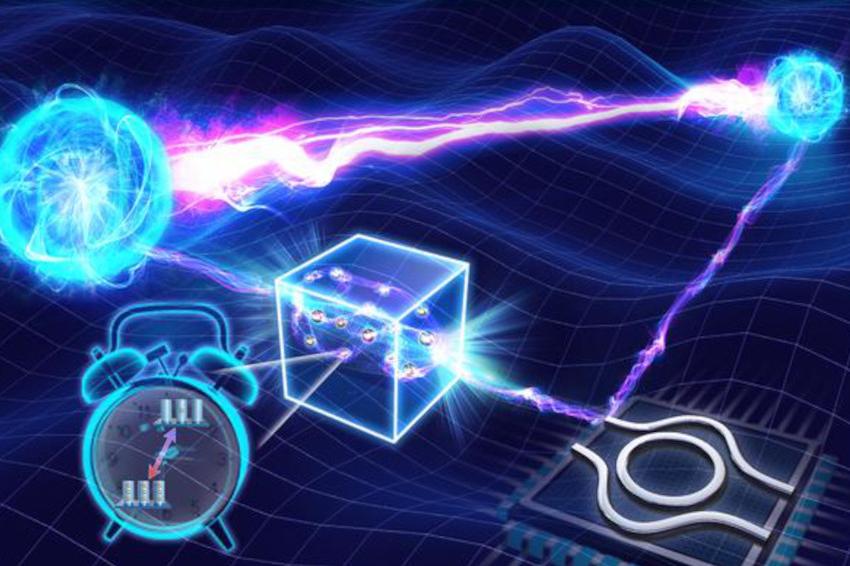Quantum storage of entangled photons
11.12.2023 - Long-lived quantum entanglement goes the distance.
Quantum technologies exploit principles of quantum mechanics in suitably engineered systems, with bright prospects such as boosting computational efficiencies or communication security well beyond what is possible with devices based on today’s classical technologies. As with classical devices, however, to realize their full potential, quantum devices will need to be networked. In principle, this can be done using the fiber-optic networks employed for classical telecommunications. But practical implementation requires that the information encoded in quantum systems can be reliably stored at the frequencies used in telecom networks – a capability that has not yet been fully demonstrated. Now, the group of Xiao-Song Ma at Nanjing University reports record-long quantum storage at telecom wavelengths on a platform that can be deployed in extended networks, paving the way for practical large-scale quantum networks.
In optical fibers, some losses are unavoidable, and the optical signals that travel through telecommunications networks need to be refreshed at regular intervals once distances exceed a few hundreds of kilometers. For classical signals, there exist well-established and routinely used techniques based on repeated signal amplification. For quantum states of light, however, these routinely used approaches are unfortunately not suitable. In conventional optical signal regeneration, the optical signal is converted into an electrical signal, which is amplified before being converted back into light pulses. However, in such a process entangled photons would lose their all-important quantum correlations. The same problem occurs with other conventional methods.
A solution is to use quantum repeaters. In a nutshell, quantum repeaters store the fragile entangled state and transform it into another quantum state that shares entanglement with the next node down the line. In other words, instead of amplifying the signal, the nodes are stitched together, exploiting their unique quantum properties. At the heart of such quantum-repeater networks are quantum memories in which quantum states of light can be stored. Realizing these memories with a sufficiently long storage time is an outstanding challenge, especially for photons at telecom wavelengths. Hence the excitement as Ming-Hao Jiang, Wenyi Xue and colleagues in the group of Xiao-Song Ma now report storage and retrieval of the entangled state of two telecom photons with a storage time of close to two microseconds. This is almost 400 times longer than what had been demonstrated before in this field and therefore is a decisive step towards practical devices.
The memories are based on an yttrium orthosilicate (Y2SiO5) crystals doped with ions of the rare-earth element erbium. These ions have optical properties that are almost perfect for use in existing fiber networks, matching the wavelength of around 1.5 micrometers. The suitability of erbium ions for quantum storage has been known for some years, and the fact that they are embedded in a crystal makes them particularly attractive with a view to large-scale applications. However, practical implementations of erbium-ion-based quantum memories proved relatively inefficient so far, hindering further progress towards quantum repeaters. Ma’s group has now made significant advances in perfecting the techniques and has shown that even after storing the photon for 1936 nanoseconds, the entanglement of the photon pair is preserved. This means that the quantum state can be manipulated during this time, as is required in a quantum repeater.
In addition, the researchers combined their quantum memory with a novel source of entangled photons on an integrated chip. This demonstrated ability to both generate high-quality entangled photons at telecom frequencies and store the entangled state, all on a solid-state platform suitable for low-cost mass production, is exciting as it establishes a promising building block that might be combined with existing large-scale fiber networks – thereby enabling a future quantum internet.(Source: Nanjing U.)







